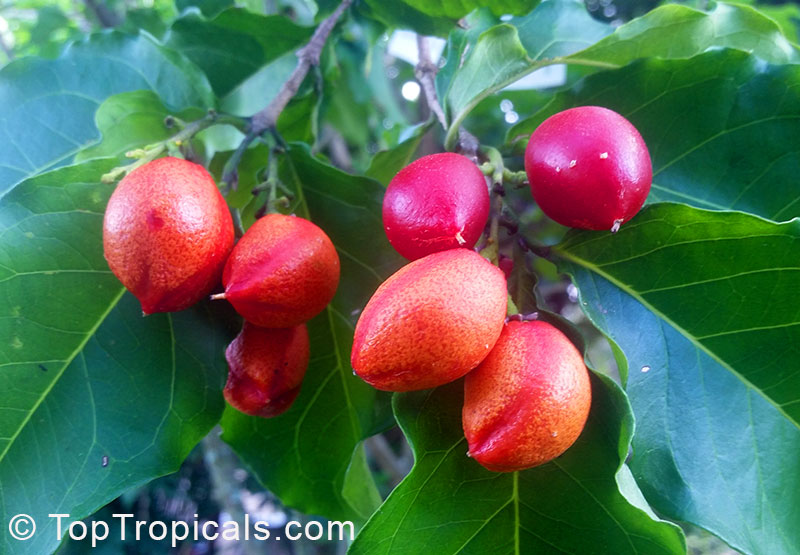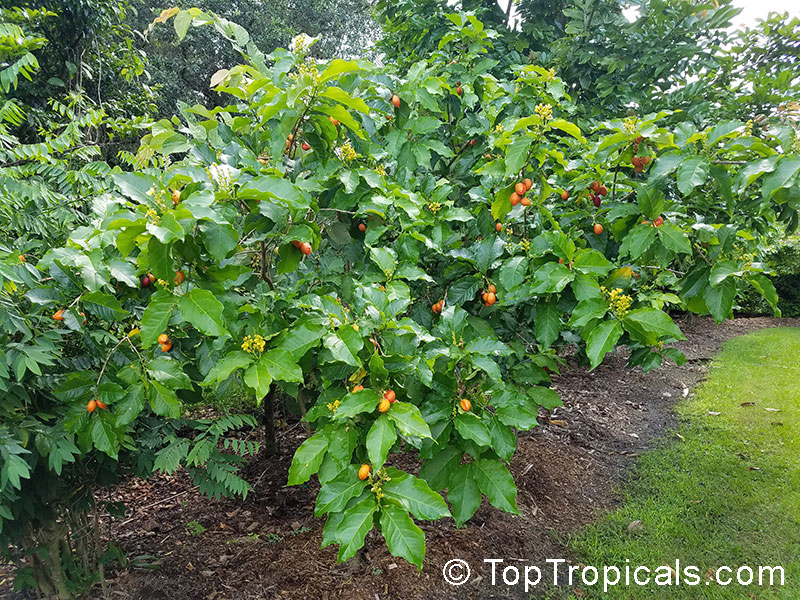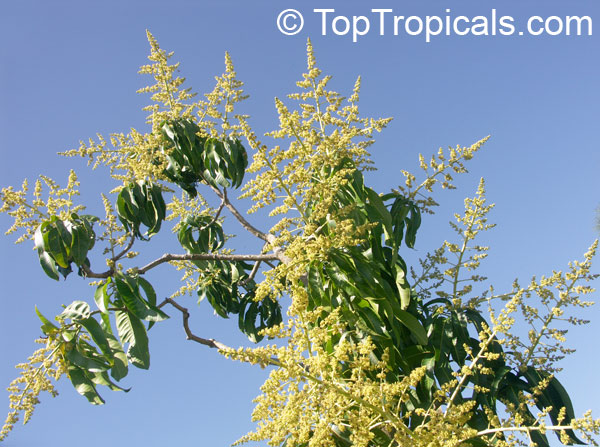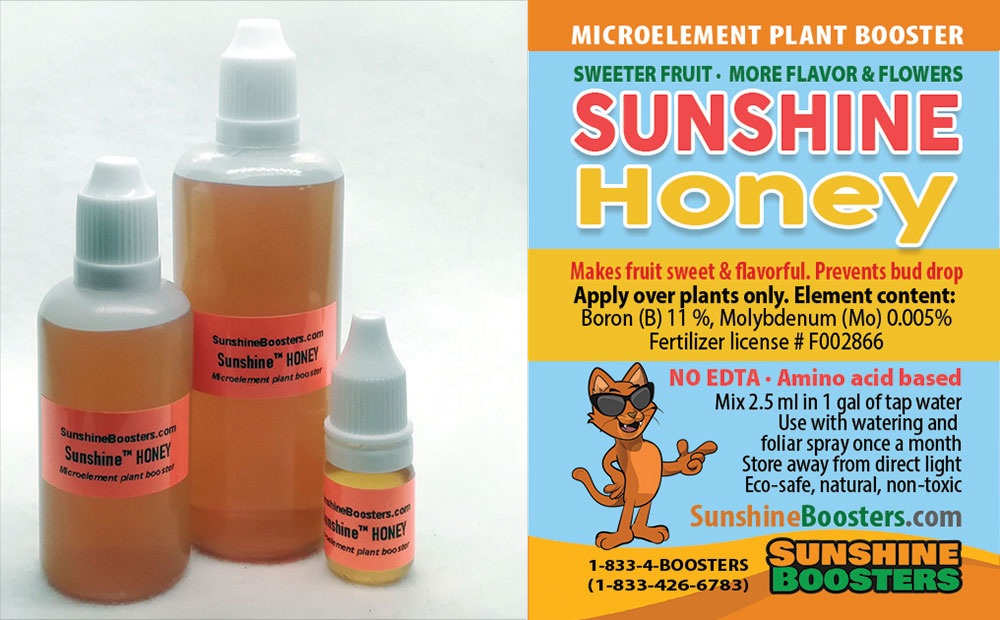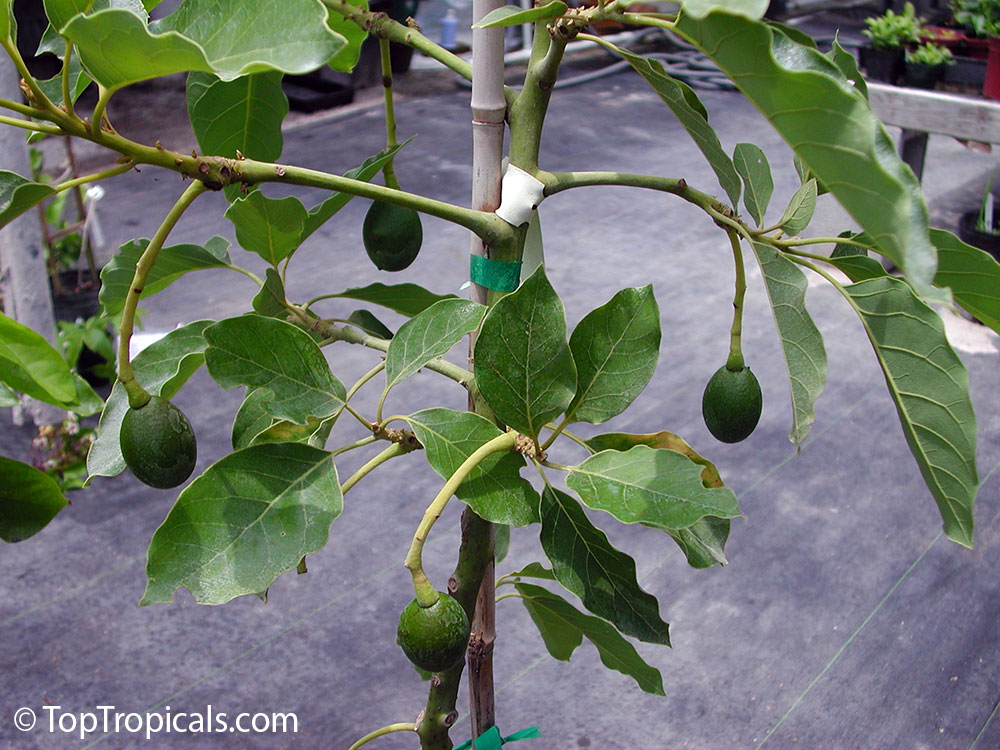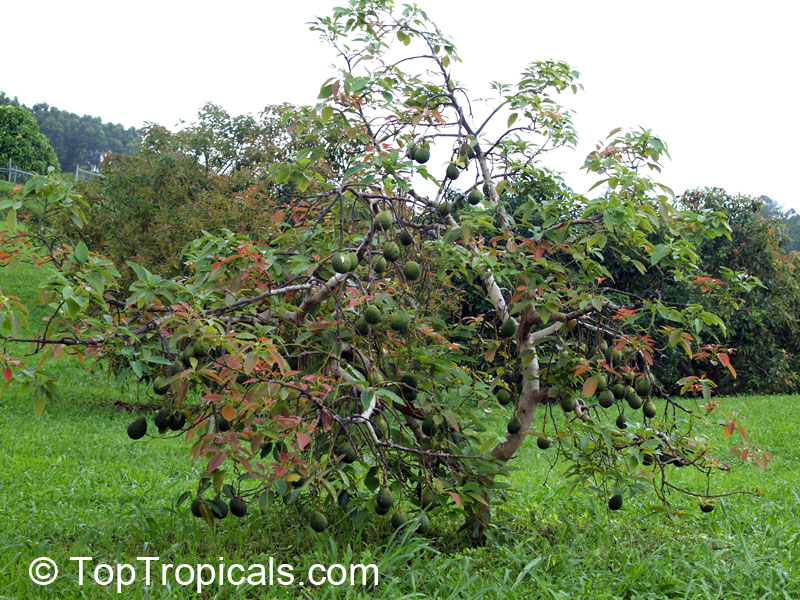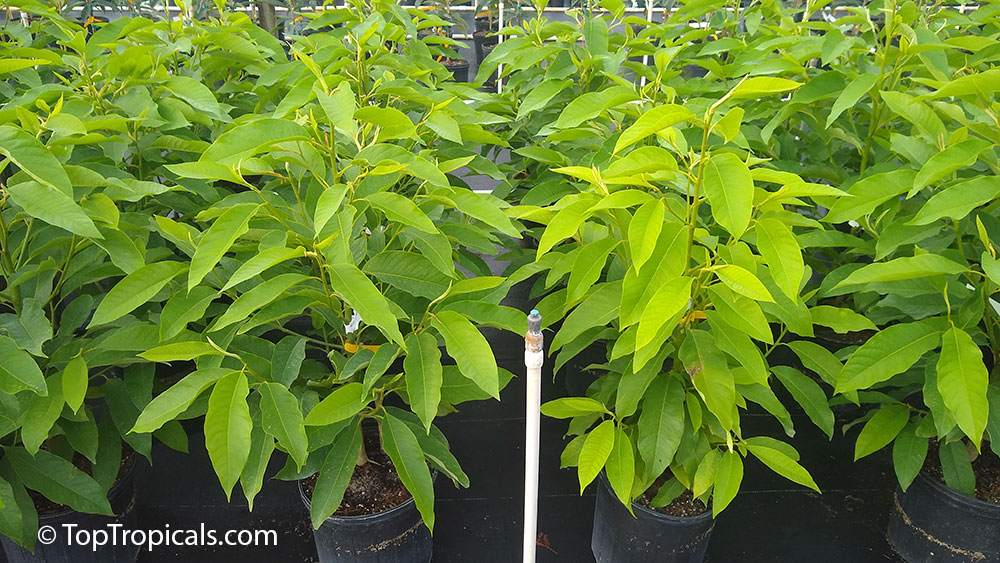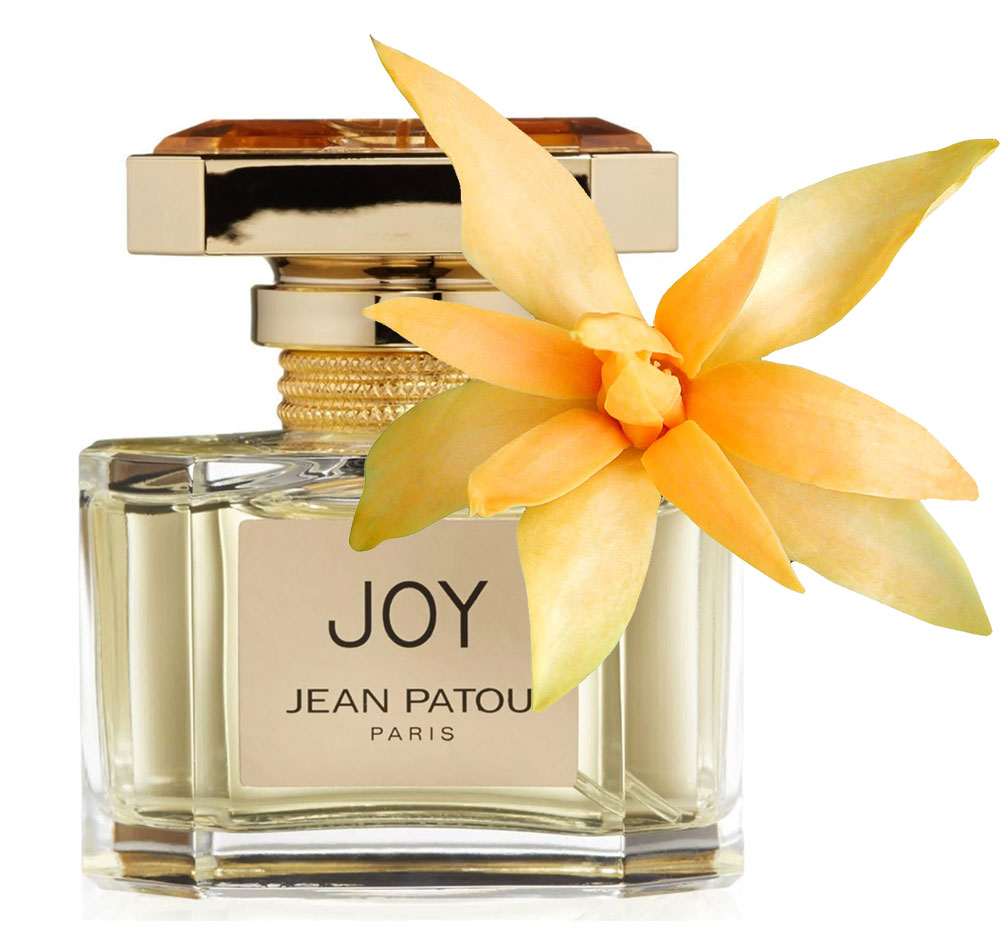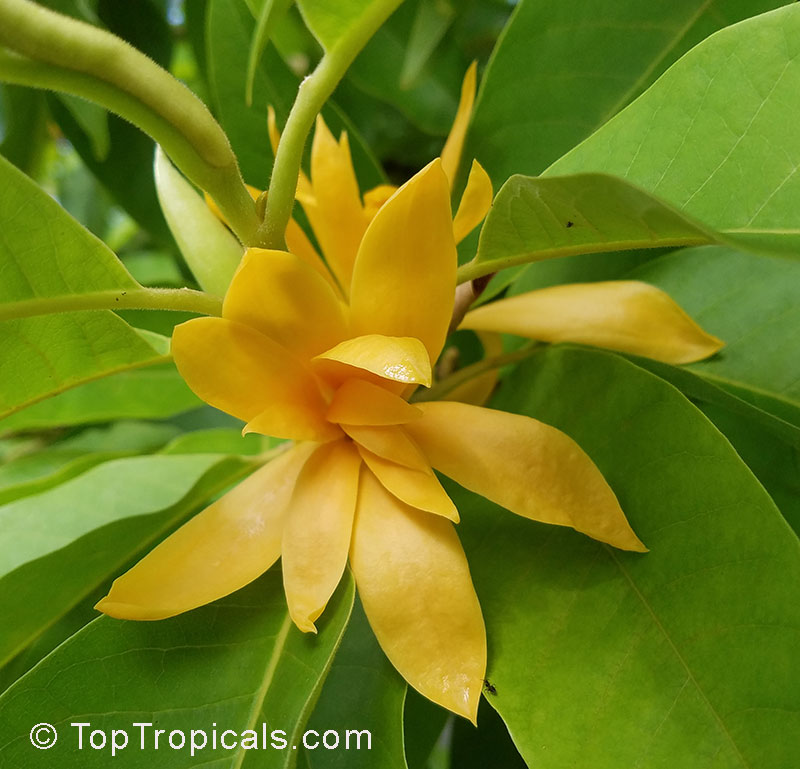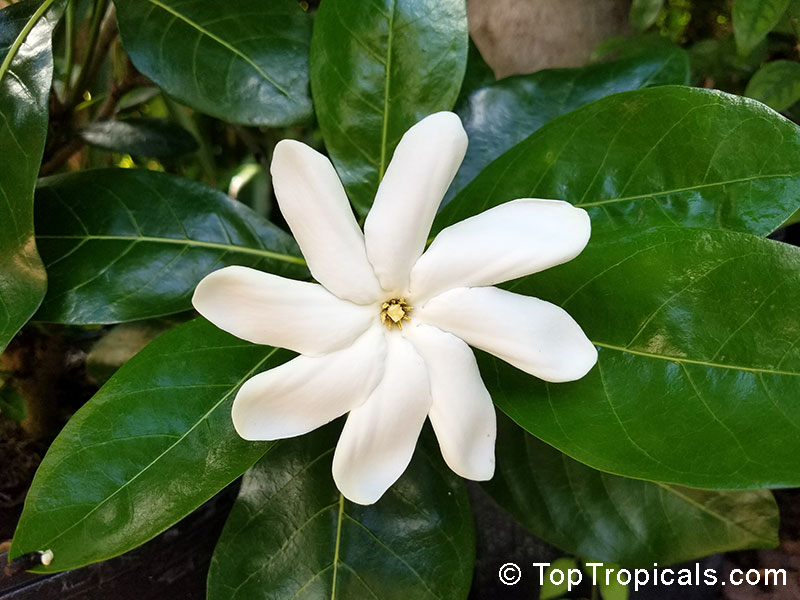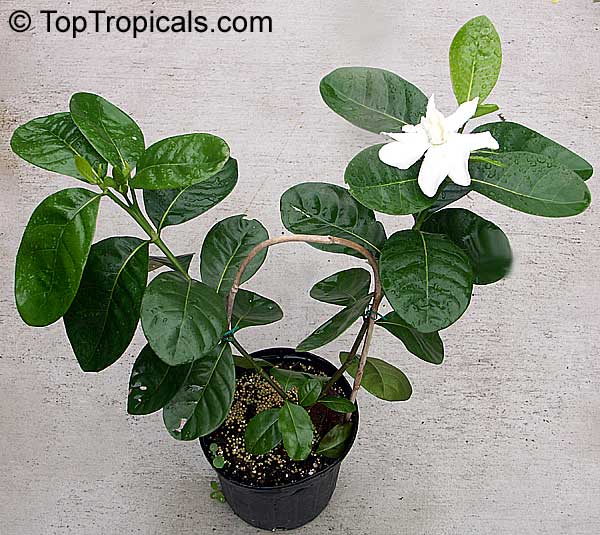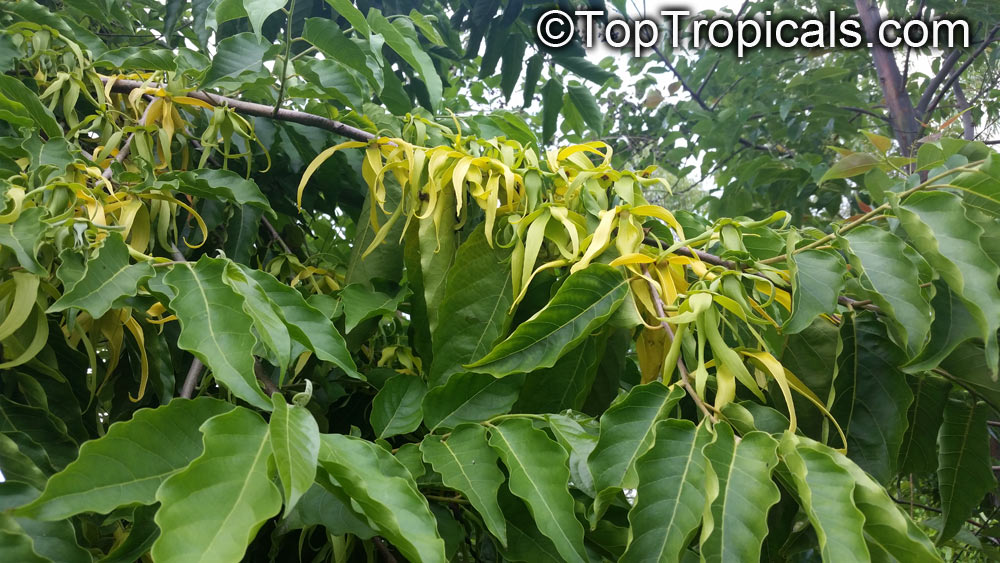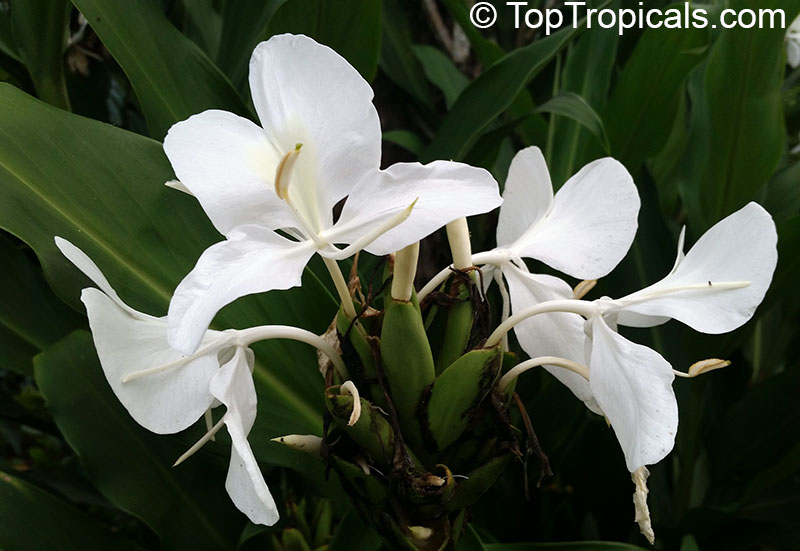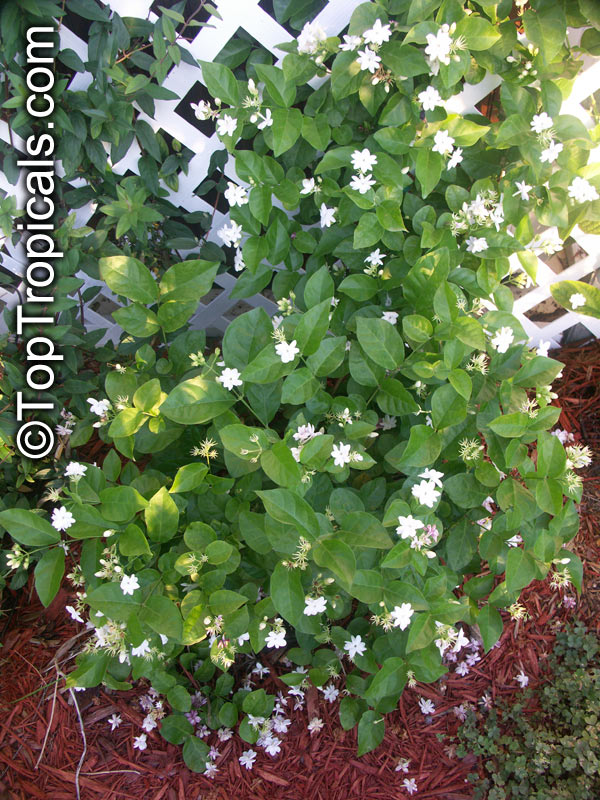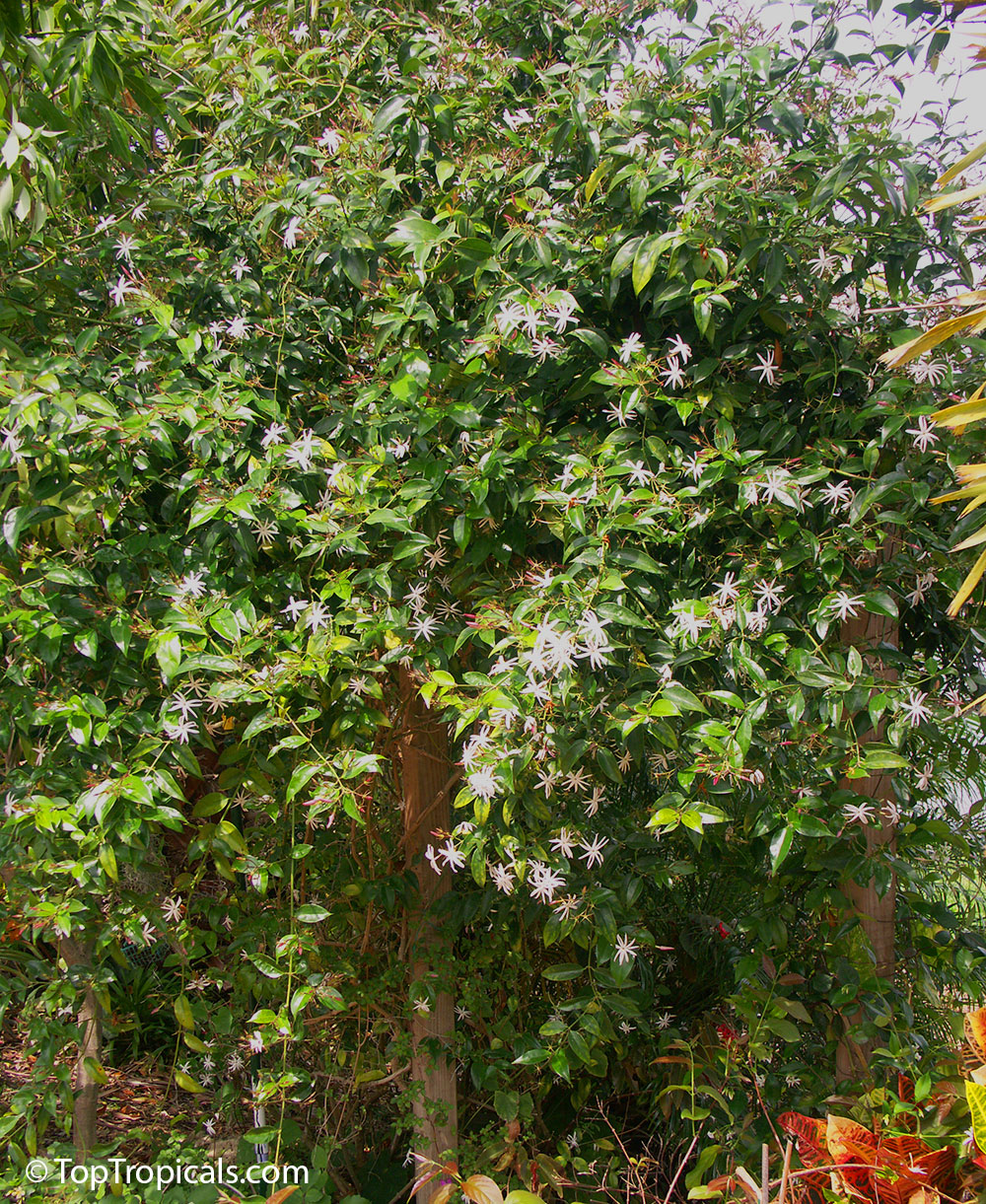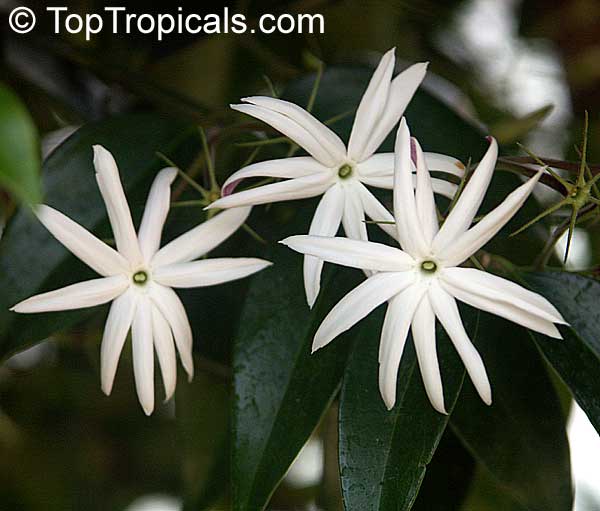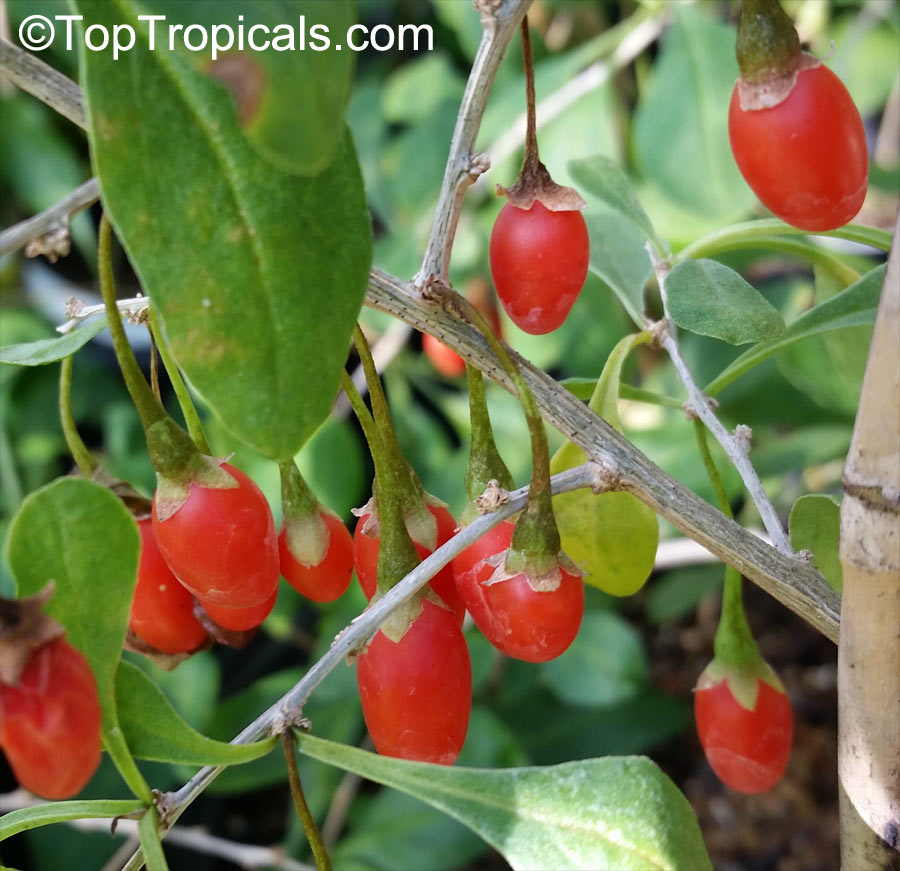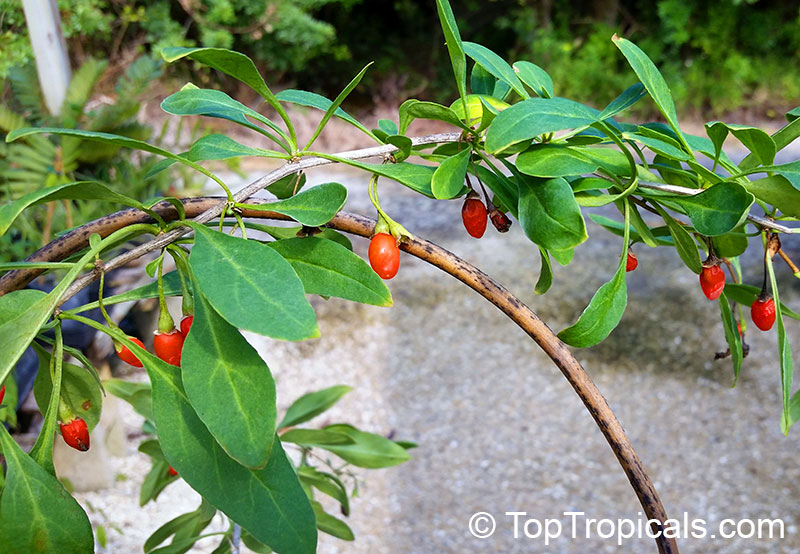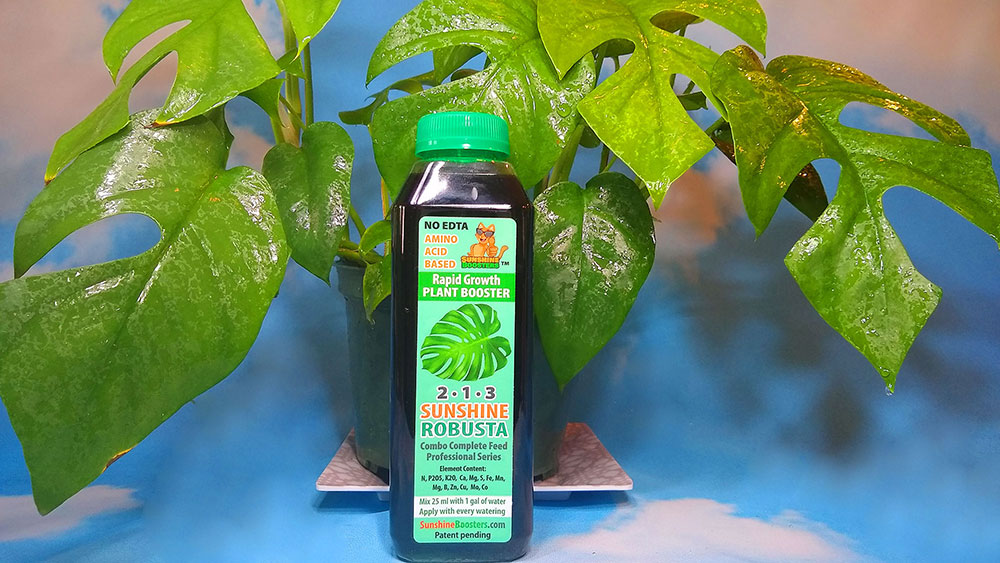Garden Blog - Top Tropicals
Date:
Peanut Butter Fruit... tastes like peanut butter!
by Alex Butova, the Witch of Herbs and Cats
...One of the most fascinating exotic fruit, as amazing as Miracle fruit, Peanut Butter Fruit is loved by both kids and
adults... and yes, it tastes exactly like peanut butter!.. Yet it is much healthier food, with many medicinal benefits...
...The easy, low-maintenance Peanut Butter Fruit tree is essential for any
edible landscape, rare fruit collector, or tropical/subtropical garden. It has a great ornamental or
screening value. Also can be grown in container, and will fruit indoors... Similar to fast-fruiting Annonas, and its close relatives Malpighia
(Barbados Cherry) and Bursonima (Nancy Tree), Bunchosia tree starts fruiting in small size and at young age: 2-3 years from
seed!..
CONTINUE READING >>
Date:
Healthy Plants: Q&A from Mr Booster
How to prevent mango flowers drop
Q:The mango blossoms my tree had in February have blown off due to weather conditions. Do you know what I can do to prevent this from happening again in the future?
A: The only "guarantee" to protect mango flowers from cold
weather damage here in Florida is to plant a LATE flowering variety. Generally,
mango trees are winter bloomers. Those varieties called "early season" start
flowering in January (for example, Nam Doc Mai), and of course very often they
get affected by cold, so they drop. Some varieties are so called "late season"
- for example Venus. They start flowering in spring when the weather conditions are
more favorable.
Another thing that may help you with mango flower drop is applying plant
micro-element supplement Sunshine-Honey - it contains Molybdenum and Boron, which help flower
and fruit development/strength and prevent their drop.
Read more: Boosting Mango Flowers and Fruit.
Date:
Establishing Avocado tree after shipping
Q: Received my Avocado tree last week and I'm a bit concerned. Is this wilting normal with a new plant? No yellowing, or dropping of leaves. We moved it out of the sun but not sure how to handle?
A: This is normal for after-shipping stress. You did right,
position the tree away from direct sun, in shade, preferably under roof (patio?)
so it doesn't get over-watered with too much rain and you can control water
amount. We recommend to spray the leaves with pure water and put a large clear
plastic bag just over the crown (leave the soil to breath). Keep in shade.
Within couple days the leaves should perk up. Do not overwater. Water only when
the top of soil gets slightly dry. In a week or so, once the plant recovers,
you may start moving it gradually into full sun, then to its permanent spot
where you want to plant it.
Avocado is not an easy plant to establish. So be careful. It needs lots of
water, however, it doesn't like wet feet - so must be planted in a
well-drained spot, with at least 4-6" elevation (on a little "hill") so it never gets
water-logged. It needs daily water to establish and may need more than just a
sprinkler system, use additional hose water when establishing in the
ground.
Date:
Growing Champaka in Virginia
Q: I purchased a Magnolia champaca 1 gallon a few years ago. It is still growing as I bring it into my greenhouse in the winter. I live in VA. This spring I planted it in the ground hoping it might bloom which it did not. Will it survive our fairly mild winters with several freezing days with some special attention? What would you do?
A: Magnolia champaca is a tropical tree and won't survive winter in VA. It can not take hard freeze. Your only option is, to keep it in a pot and bring inside. If the temperature inside your greenhouse is too low, this may affect the plant's ability to flower. For example, if it stays 35-40F for a whole month - although it is not a hard freeze and the plant may survive, but the duration of the cold period is more critical than the low temperature itself. Champaka can survive a few hours even at upper 20's, but not many days with cool temperatures. The temperature in winter should be maintained at least above 55F during day time (the higher the better) and at least above 45F at night.
If the tree has grown too big, you may trim it. If the root ball is too
large, roots can be trimmed too (similar way like they do with bonsai) before
repotting. However, trimming must be done either during warm season and active
growth, or in Spring, when the tree starts waking up and promotes new
growth.
To encourage flowering, start fertilizing your Champaka with a liquid bloom
booster - SUNSHINE Pikake - Fragrant Flower Booster. It can be used year round
including winter months, and it is safe to apply with every watering. This way
you will provide to the tree enough energy for the next flowering season, so
flowers can be expected in late Spring - Summer.
Read more about greenhouse growing: Greenhouse in Virginia.
Date:
Champaka - a true Joy of your life
by Alex Butova, the Witch of Herbs and Cats
...Champaka, or Joy Perfume Tree, is regarded as one of the most sacred
trees of India and tropical Asia. Its flowers exude a divine fragrance that
is exceedingly pleasing to the Gods... and women!..
...The tree was traditionally used to make fragrant hair and massage oils.
Jean Patou's famous perfume, 'Joy', the second bestselling perfume in the world after Chanel No. 5, (but definitely the most expensive number one!) is derived from the essential oils of champaka flowers. The plant common name "Joy Perfume Tree" comes from this perfume. Many niche perfumers are now once again using Champaka Absolute as single note fragrances...
Planting a Golden Champaka really makes your home a sweet home. Also you
can take the flower into your car, office, restroom, and anywhere you want to
create fragrant atmosphere. It emits a unique warm fragrance which promotes a
peaceful state of mind, reduces stress and helps you to relax and breathe
easily. Looks like it is specially designed for moments of tranquil
contemplation. It's the nature of Champaka - to remind us of the Divine in all
things...
CONTINUE READING >>
Date:
Tahitian Gardenia
Q: I am interested in your Tahitian Gardenia and I would love to try and grow this plant in a large container/fabric pot. The soil here where I live is terrible as it's hard rock, clay, and sand! So I'm not sure if amending the soil would help to plant in the ground? Can you tell me if this will do okay in a container or best in ground? I live here in Las Vegas, NV (zone 9a). Any information would be great to help me make a this decision, I love the selection of cool tropical plants you offer! Also my daughter does Tahitian/Polynesian dance and this would be a cool "topping on the cake" if she could have a live Tiare flower in her performances.
A: Tahitian Gardenia will be doing best if grown in container in your
area. In its natural habitat, it grows full sun but also it enjoys mild weather
conditions and high air humidity. All gardenias prefer acidic soils. In your
area, if planted in the ground, it may be exposed to some harsh conditions:
too high temperatures, too hot sun, dry air, and as you mentioned - heavy clay
and sandy soil. You can enjoy this plant grown in container, which can be
moved as needed away from too much sun during summer months. Use well-drained potting mix. Use plastic pot, do not use fabric or clay
pots - soil will dry out too quickly.
Also remember to fertilize this plant on regular basis with a liquid
fertilizer SUNSHINE Pikake - Fragrant Flower Booster.
Grow gardenia in full sun or semi-shade during the hottest months. You may
spray it with pure water if the air too dry and hot. Enjoy your Tropical
Beauty and good luck!
Date:
Fragrant plants - Sweet memories
...More than any other sense, the sense of smell has the power to recall memories of the past. Perhaps this is because the olfactory impressions are received by the brain's limbic system, one of the most ancient components that also associated with emotions. The result is that even a whiff of a certain flower or leaf can instantly transport us in time to when we first encountered the fragrance. Little wonder that fragrant plants have always ranked high among Southern favorites...
CONTINUE READING >>
Date:
Jasmine for a fence
In the photo: Jasmine Maid of Orleans
Q:We are looking for a jasmine variety without thorns that we can grow on a wire fence...
A: All true jasmines (Jasminum spp.) are thornless. So you are safe to get anyone you like. The most vigorous, fast growing jasmines that grow into a vine, are:
Jasminum dichotomum
Jasminum pubescens
Jasminum nitidum
Jasminum officinale
Jasminum sambac Maid of Orleans - the
most fragrant!
In the photos: Jasminum nitidum (Star Jasmine)
Date:
The Magic Goji Berry
by Alex Butova, the Witch of Herbs and Cats
...According to folklore, people living in the Himalayas who eat Goji berries are reputed to live to between 120 and 150 years old... The famous Li Quing Yuen - a herbalist selling litchi, goji berry, wild ginseng, and gotu kola along with other Chinese herbs, and lived off a diet of these fruits, herbs and rice wine - ate Goji berries on a daily basis. Is said he to have lived to over 250 years... Is this possible? Find out!
CONTINUE READING >>
Date:
Healthy Plants: Q&A from Mr Booster
Healthy Heliconia Leaves?
Q: I purchased a heliconia from you a couple months ago. The new growth seems to be doing fairly well, however some of the larger leaves are discoloring around the edges then drying up. It's potted in a large pot with potting soil with 3 holes in the bottom to help with drainage in partial sun under a Royal Palm facing northwest. I'm here in Ft Myers. I was previously watering it every other day with your rapid growth fertilizer 1 tbsp per gallon but I have cut that back to once or twice a week. Please let me know your thoughts.
A: Heliconias and Gingers tend to develop dry leaves if grown in pots,
especially ceramic or clay pots, because soil in such pots dries out too fast.
These dry leaves are not caused by fertilizer, and you can see lots of new
healthy green growth. The plant overall seem to be healthy. Continue fertilizing
it with liquid Sunshine Robusta that is great for all wide-leaf tropical species,
promotes green, lush foliage, and do not use any additional dry fertilizers!
Another suggestion, try to move the plant in more shady spot. Right now it
sits in pretty bright light, this may be OK for established plants in the
ground, but potted heliconias are very sensitive to hot sun. They get leaf burn
easily.
